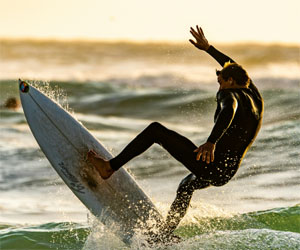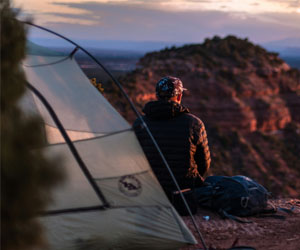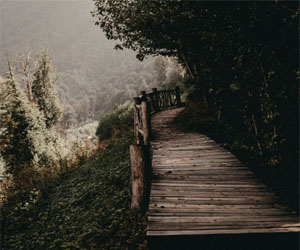


Surfboard Designs For Beginners

Surfing is an exhilarating water sport that beckons people from all walks of life. For those just beginning their journey, choosing the right surfboard is a critical step. Surfboard designs for beginners are tailored to facilitate the learning process, providing stability, buoyancy, and control. In this article, we'll explore the key surfboard designs that are ideal for novice surfers.
Longboards: The Stable Platform
Longboards, often over 8 feet in length, are the classic choice for beginners. These surfboards provide unmatched stability and buoyancy, making them an ideal starting point. Key features of longboards for beginners include:
Length: Longboards are longer, which means more stability and room for paddling.
Width: Their width provides additional stability, making it easier for beginners to find their balance.
Volume: Longboards have ample volume, aiding in buoyancy and making it easier for novice surfers to catch smaller waves.
Longboards are perfect for learning the basics of paddling, balancing, and wave-catching. They offer a forgiving platform for new surfers, allowing them to gain confidence and experience the joy of riding waves.
Foam Boards: The Soft Landing
Foam boards, or soft-top surfboards, are another excellent choice for beginners. These boards are constructed with a soft, foam-covered deck, making them exceptionally safe for newcomers. Key features of foam boards include:
Safety: Foam boards reduce the risk of injury during falls, thanks to their soft construction.
Buoyancy: They offer sufficient buoyancy for easy paddling and wave-catching.
Stability: The wide and stable platform helps beginners find their balance.
The forgiving nature of foam boards makes them a popular choice for surf schools and those learning to surf for the first time.
Funboards: Versatile Transition
Funboards, also known as mini-malibus, offer a bridge between longboards and shortboards. They are typically between 7 and 8 feet in length, providing more maneuverability than longboards while retaining stability. Key features of funboards for beginners include:
Stability And Maneuverability: Funboards strike a balance between stability and maneuverability, making them ideal for beginners looking to progress beyond longboarding.
Buoyancy: They offer sufficient buoyancy for early-stage surfers to catch waves easily.
Funboards are an excellent choice for novice surfers who want to start developing their skills and experience a bit more excitement in the water without making the leap to a shortboard.
Mini-Malibus: Versatility And Agility
Mini-malibus are a compact version of longboards, typically around 7 to 8 feet in length. They provide a balanced blend of stability and maneuverability, making them a versatile option for beginners. Key features include:
Versatility: Mini-malibus are designed for a wide range of conditions, making them adaptable for beginners.
Stability: They offer enough stability to help newcomers build their confidence.
Mini-malibus allow beginners to explore different aspects of surfing, from riding small, mellow waves to trying out basic maneuvers.
The choice of the right surfboard is pivotal for beginners embarking on their surfing journey. Longboards, foam boards, funboards, and mini-malibus are all excellent surfboard designs for novice surfers. These boards offer stability, buoyancy, and forgiveness, making it easier for beginners to learn the fundamentals of paddling, balancing, and wave-catching. With the right surfboard design, newcomers can enjoy a smoother and more rewarding introduction to the world of surfing, setting them on the path to mastering the art of riding the waves.


 Camping allows you to discover the beauty of nature up close and personal. You'll have the chance to witness breathtaking sunrises and sunsets, where the sky is painted in hues of gold and pink. You can explore winding forest trails that lead to hidden waterfalls, or gaze in wonder at the star-studded night sky, free from the glare of city lights. The beauty of the natural world reveals itself in the vibrant colors of wildflowers, the crystal-clear waters of mountain streams, and the towering majesty of ancient trees.
Camping allows you to discover the beauty of nature up close and personal. You'll have the chance to witness breathtaking sunrises and sunsets, where the sky is painted in hues of gold and pink. You can explore winding forest trails that lead to hidden waterfalls, or gaze in wonder at the star-studded night sky, free from the glare of city lights. The beauty of the natural world reveals itself in the vibrant colors of wildflowers, the crystal-clear waters of mountain streams, and the towering majesty of ancient trees.
Furthermore, camping offers a return to the basics of life. With limited access to modern conveniences, you'll learn to appreciate the fundamental elements that sustain us. Building a campfire, cooking a meal over an open flame, and finding shelter in a simple tent or under the open sky harken back to our most primal instincts. This connection to the essentials of survival fosters a sense of self-sufficiency and a deeper appreciation for the resources that nature provides.
Discovering the beauty of camping is also about reconnecting with friends and family. Campfires become gathering places for stories and laughter, where the bond of shared experiences is strengthened. Whether it's toasting marshmallows, playing card games, or simply enjoying each other's company, camping offers a unique setting for building and deepening relationships.
As you venture into the world of camping, you'll find that it's not just about a temporary escape; it's a profound journey that enriches the soul and nurtures a lasting connection to the natural world.


 Outdoor exploration unveils the beauty and wonder of the natural world. It's a chance to wander through pristine forests, scale rugged mountain peaks, or paddle across tranquil lakes, all while taking in the breathtaking scenery and the awe-inspiring landscapes that nature offers. Whether you're watching the sun set over a canyon, witnessing a cascading waterfall, or stargazing under a clear night sky, the grandeur of the natural world becomes a playground for your senses.
Outdoor exploration unveils the beauty and wonder of the natural world. It's a chance to wander through pristine forests, scale rugged mountain peaks, or paddle across tranquil lakes, all while taking in the breathtaking scenery and the awe-inspiring landscapes that nature offers. Whether you're watching the sun set over a canyon, witnessing a cascading waterfall, or stargazing under a clear night sky, the grandeur of the natural world becomes a playground for your senses.
The allure of outdoor exploration is deeply rooted in the pursuit of the unknown and the challenge of the wild. Hiking along winding trails, navigating through dense forests, or ascending rocky peaks all demand adaptability, resourcefulness, and courage. These challenges push your boundaries and provide a sense of accomplishment that is hard to find elsewhere.
Outdoor exploration encourages us to reconnect with our most primal instincts. As we set out on expeditions and embark on adventures, we become more attuned to the environment, listening to the rhythm of the earth, smelling the scent of the forest, and feeling the solid ground beneath our feet. This sensory experience allows us to reconnect with the world in a profound and meaningful way.
Embracing The Thrill Of Exploration
 The Call Of The Unknown: The call of the unknown is a primal urge that beckons individuals to venture beyond the confines of the known world. It is a magnetic force that ignites the imagination, stirs the soul, and propels us into uncharted territory. This call transcends cultural, geographical, and temporal boundaries, unifying humanity in a shared pursuit of discovery.
The Call Of The Unknown: The call of the unknown is a primal urge that beckons individuals to venture beyond the confines of the known world. It is a magnetic force that ignites the imagination, stirs the soul, and propels us into uncharted territory. This call transcends cultural, geographical, and temporal boundaries, unifying humanity in a shared pursuit of discovery.
Courage In The Face Of Uncertainty: Journeying into the unknown often requires courage in the face of uncertainty. Whether it's embarking on a solo backpacking expedition in a remote wilderness, conducting groundbreaking scientific research, or pursuing an unconventional career path, it demands resilience, adaptability, and the willingness to confront the unexpected.
The Thrill Of Exploration: The thrill of exploration lies in the anticipation of what lies beyond the horizon. It's the exhilaration of stepping into uncharted territory, where every moment is filled with the possibility of discovery. The unknown is a canvas upon which explorers paint their experiences, leaving behind a tapestry of memories and revelations.
Embracing The Serenity Of Winter Sports
 2. The Joy Of Fresh Tracks: One of the most exhilarating aspects of gliding down pristine slopes is the opportunity to create fresh tracks. Each descent is a blank canvas awaiting your unique imprint, allowing you to write your story in the snow. There's a sense of freedom and liberation in leaving your mark on the mountain.
2. The Joy Of Fresh Tracks: One of the most exhilarating aspects of gliding down pristine slopes is the opportunity to create fresh tracks. Each descent is a blank canvas awaiting your unique imprint, allowing you to write your story in the snow. There's a sense of freedom and liberation in leaving your mark on the mountain.
3. A Symphony Of Silence: Gliding down pristine slopes often comes with a soundtrack of serenity. The only sounds are the swish of your skis or the carve of your snowboard on the snow and the gentle whisper of the wind. The tranquility of the winter landscape is an escape from the noise of everyday life.
4. The Magic Of First Light: Early mornings on the slopes offer a magical experience. As the first rays of sunlight touch the pristine snow, they create a sparkling, crystalline world that seems almost surreal. The interplay of light and shadow on the slopes is an awe-inspiring sight to behold.
5. A Connection With Nature: Gliding down pristine slopes is not just a physical activity; it's a communion with the natural world. As you navigate the terrain, you're intimately connected to the mountains, the snow, and the elements. It's an opportunity to be in harmony with nature.
Understanding The Risks Of Sports-Related Injuries
 1. Acute Trauma: One of the most immediate risks in sports is acute trauma, which includes injuries such as fractures, dislocations, and concussions. These injuries often occur as a result of sudden, forceful impact and can have severe consequences if not promptly addressed.
1. Acute Trauma: One of the most immediate risks in sports is acute trauma, which includes injuries such as fractures, dislocations, and concussions. These injuries often occur as a result of sudden, forceful impact and can have severe consequences if not promptly addressed.
2. Overuse Injuries: Overuse injuries are another common risk in sports. These injuries develop gradually from repetitive stress on a particular area of the body. Overuse injuries can affect tendons, muscles, and joints, leading to conditions like tendinitis, stress fractures, and muscle strains.
3. Sprains And Strains: Sprains and strains are frequent sports injuries. Sprains involve the stretching or tearing of ligaments, while strains affect muscles or tendons. These injuries often result from improper technique, inadequate warm-up, or overexertion.
4. Dislocations: Dislocations occur when a bone is forcibly pushed out of its joint. Sports that involve sudden impacts or falls, such as football or basketball, carry a higher risk of dislocation injuries.
5. Stress Fractures: Stress fractures are hairline cracks in bones that typically result from repetitive, high-impact activities. Runners, gymnasts, and dancers are particularly susceptible to these injuries.
6. Concussions: Concussions are a type of traumatic brain injury often caused by head impacts, common in contact sports like football and soccer. Proper diagnosis and management of concussions are critical to avoid long-term consequences.
7. Contusions And Bruises: Contusions, commonly known as bruises, are injuries that result from blunt force trauma. While not usually severe, they can be painful and temporarily limit performance.
8. Sprained Ankles: Ankle sprains are a prevalent sports injury, typically occurring when the foot rolls or twists unnaturally. They can vary in severity from mild to severe and may require extended recovery periods.
9. Cuts And Abrasions: Sports that involve contact with hard surfaces or objects may lead to cuts and abrasions. These injuries can range from minor scrapes to more severe lacerations.